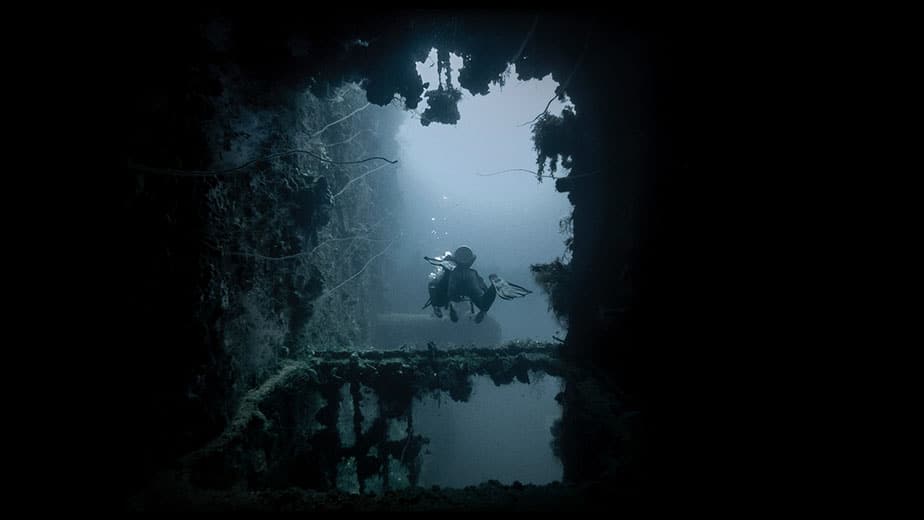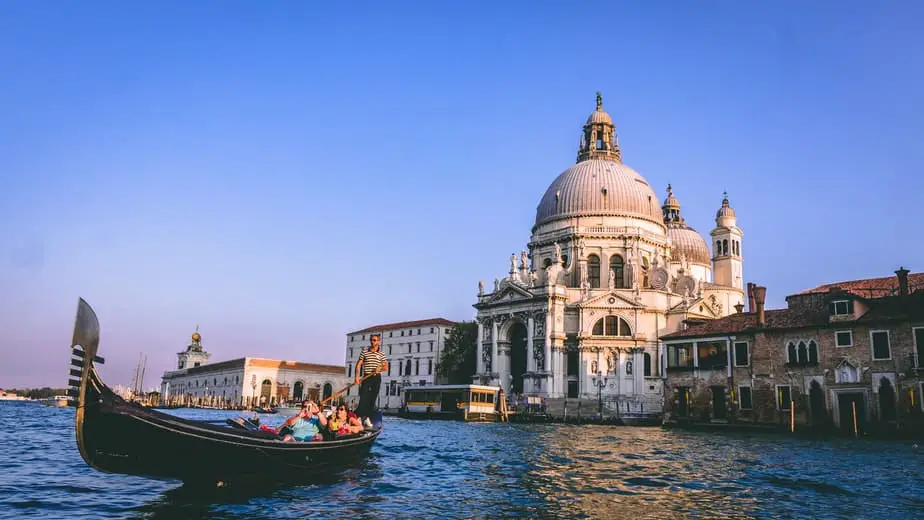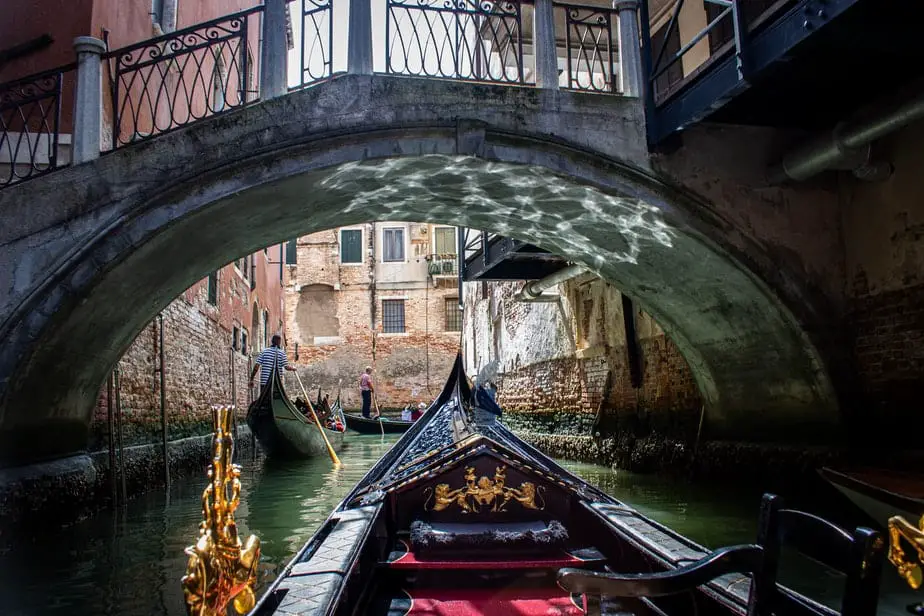Venice is unique because it was built over a group of 118 small islands which are separated by canals and linked by over 400 bridges. It is these canals that so many people are enamored by which has garnered Venice its many nicknames: “City of Bridges”, “The Floating City”, “City of Canals.” Since there is an abundance of water everywhere, scuba divers wonder: what are the best places to scuba dive in Venice, Italy?
There are numerous scuba diving opportunities available in the coastal towns surrounding Venice’s central city, such as in Caorle, Jesolo or Cavallino-Treporti. You can also explore the Venetian Tegnue, which are ancient underwater rock formations with an abundance of Mediterranean marine life. There are various wrecks you can visit near Venice, such as the Vrmac, Evdokia II, and S88. Unfortunately, if you were hoping to scuba dive in the famous canals, you cannot. Not only is it illegal and unsafe, but it would not be as glamorous as you think because of how dirty the water is. It is much better to explore the canals on a gondola instead.
Even though diving in the famous canals is not an option, there are still plenty of diving opportunities in and around Venice which we’ll discuss in this article.
Scuba diving opportunities in Venice, Italy
Can you dive in the Venetian canals?
Venice is literally just a bunch of islands interconnected by bridges, so naturally, there is lots of water surrounding this beautiful city. Venice is perhaps most known for its canals, where you can take a ride on a gondola while taking in the sights this magnificent city has to offer.
Many water sports enthusiasts have often wondered if they can snorkel, swim, or scuba dive in these canals. The answer is a resounding no, you cannot dive in the canals. In the same way that cars belong on roads, the canals are intended for gondolas only. Anybody in the canals is in extreme danger of getting hit by one. Furthermore, the water in the canals isn’t clean at all, so you won’t see much underwater life or anything interesting.
The Tegnue
The Tegnue are a formation of rocks which were named by local fishermen. Tegnue means “held” or “caught” in Italian, and the rocks are so named because the fisherman often caught and broke their nets on them.
Despite Italy’s ancient history, the Tegnue were actually a recent formation that came about due to methane gas emissions which caused cementation of the sea bed, creating a reef that sometimes reaches over a meter high.
Diving by the Tegnue can be hit or miss. While the environment is abundantly full of life, it can be hard to spot them at times due to the frequent low-visibility caused by plankton. The nutrients from the river attract armies of plankton, making it hard to see.
By talking to the locals, you may get more specifics on where to explore. Here are some great starting points:
Secca Alberto
Secca Alberto is the perfect dive site for both experienced and inexperienced divers. When you zoom out, the terrain looks like a tongue, so you can just follow the sides. Hopefully you brought your camera, because it’s home to Blennies, Duck Bill Rays, Tunas, Common Dentex, and a variety of microorganisms.
Look into every cavity for Drums, Lobsters, and Conger Eels hiding in the cracks. Diving down, you will be welcomed by colorful orange sponges, sometimes even on a Sponge Crab, as you reach the depths of this dive site.
Thanks to its conservative maximum depth of between 12-17 m / 40-55 ft, it’s the perfect place to try a Discover Scuba Diving course or to finish up your Open Water Diver course.
Severin
Severin is a man-made dive site created by installing cement blocks and metal poles at the bottom of a body of water. Eventually, it became home to mussels, Painted Comber, Octopuses, Nudibranchs, schools of Mediterranean Demoiselles, and even Duckbill Rays if you’re lucky. Thus, an artificial reef was created.
As you descend down the anchor line, you will see colorful orange sponge, sometimes on Hermit Crabs, as they greet you on the way down.
La Madonnina
La Madonnina used to be home to the Madonna Statue, however it remains a local favorite because of the presence of Corvina Drums, big lobsters, Scorpionfish, and numerous Seabass. It’s not quite as vibrant as other dive sites in Venice, however you can still see plenty of cuttlefish and nudibranchs.
If you’re lucky to have good visibility, La Madonnina is one of the most lively dive sites. However, the muddy bottom is an obstacle to clear visibility, so there’s a chance that you won’t quite get the full experience.
Secca Grande
Another name for Tegnue is actually Secca. Secca Grande is a dive site for advanced divers because it’s deeper than the other dive sites listed, with a max depth of 26 m / 85 ft.
However, what’s really challenging is that the water temperature is down to 14°C / 57°F, so you’ll probably need a 7 mm wetsuit at minimum or perhaps a drysuit. However, this is one of the best places to finally get that Advanced Open Water Diver certification.
Secca Grande is more vibrant than other dive sites due to the presence of many lobsters and other amazing species like the John Dory Fish and the Spotted Dog Fish.
Shore diving
Venice is home to many places where you can shore dive from the beach. It’s particularly good for kids because many places have a maximum depth of only 4 m / 13 ft. Young children get a chance to see beautiful creatures like Pipefish, Seahorse, Cuttlefish, and lobsters.
Gulf of Venice
There are numerous scuba diving opportunities provided by the coastal towns surrounding Venice such as at Caorle, Jesolo, or Cavallino-Treporti.
These are great places for inexperienced divers to enjoy a recreational dive at a leisurely pace. It’s not the most exciting dive site around, which is a great benefit if you want a more laid back experience.
WIth that said, even in these waters, you can find smaller marine life like Pipefish, Cuttlefish, Seahorses, and Lobsters in the shallow areas of seagrass.
If you’re looking for something more exciting, either dive at the aforementioned Tengue, or check out the famous shipwrecks and relive a piece of history.
Wreck sites in the Gulf of Venice

Owing to Venice’s long maritime history, an abundance of shipwrecks can be visited by adventurous wreck divers. These wrecks are now home to an oasis of aquatic creatures for divers to observe. History buffs will want to read up on the particular ship they are visiting to enhance their experience.
Wrecks found in the Gulf of Venice and the wider Adriatic Sea include torpedo boats, ships, submarines, and planes. The following are some good places to start:
Vila
The SS Vila sank after colliding with SS Rodi on Feb 20, 1935. After laying on the seabed for over 70 years, most of the wreck’s structure has since deteriorated. What remains of the wreck is home to countless species of fish (lobsters, drums, conger eels, cod, and damselfish).
Unfortunately, due to the wreck’s close proximity to the mouth of the Sile river, the visibility is often poor. However, experienced divers see this as a welcome challenge as they can train their underwater navigation skills.
Keep an eye out in particular for Conger eels that like to welcome divers by poking their curious heads out from their den, and Lobsters that are well hidden within the crevices of the SS Vila.
Evdokia II
The Evdokia II vessel sank relatively recently on March 7, 1991 when the cargo ship Onduregno Philippos rammed into its side. Thankfully, it was not a tragedy as this 100 m long ship took a long time to sink, giving the crew enough time to safely evacuate.
This wreck is located seven nautical miles from the coast, at a depth of 30 m (100 ft) in waters that have varying degrees of visibility. The Evdokia II is nearly completely covered in marine concretions.
Since the Evdokia II sank relatively recently, there are two suitable difficulties available: normal or hard. The normal difficulty is exploring the ship from the outside. The hard difficulty is for experienced divers that want to visit the propeller and some of the internal rooms. Since this dive site is so far from shore, a trip there is only made when there is a full group.
S88
The S88 sank in Lido when it collided against a pontoon boat that was in the process of lifting an Austro-Hungarian submarine. It lies at a depth of 20 m, six nautical miles from Venice.
For many years this wreck site was a mystery. However, during the filming of “Linea Blu”, while some transfers were in progress, the onboard instrumentation of modern boats detected the presence of a wreck.
After some more precise checks were conducted, it was determined that at the bottom of the water lies an Italian torpedo boat. When divers went to check on the wreckage, they were surprised to see this ship had a length of 40 m / 130 ft.
Now, it is yet another small wreck diving site that we can explore at our leisure. Not much remains, so only a small group of advanced divers can check it out.
5PN
The Torpediniera 5PN (short for Pattison Napoli), or simply 5PN, was a 120 ton torpedo boat that was sunk on June 26, 1915 by a German submarine UB-1. A torpedo had hit its bow, and it took 40 minutes before the captain gave the order to abandon ship. The ship eventually sank vertically. Two crew were killed in the torpedo explosion, and the remaining crew were rescued.
As for the ship itself, it was 42.5 m / 140 ft in length, 4 meters wide, and weighed approximately 140 tons. Given how long ago it was sunk, today very little remains of the 5PN. The cannon lies on its side, and two Thornycroft boilers protruding from the seabed. The propeller has sunk deep into the mud.
What remains of 5PN is very little, and therefore only a small group of experienced divers can navigate it. It lies at a depth of approximately 22 m / 70 ft underwater.
Best times to scuba dive in Venice, Italy

For the warmest temperatures, the optimal time to dive in Venice is during the months of May to October. The average water temperature ranges from 19°C / 65°F in May to 25°C / 78°F in August.
Unfortunately, a consequence of diving during the summer is that divers will have to deal with higher levels of algae decreasing the overall visibility. This is a much better option than dealing with the cold.
With that said, most divers will either wear a drysuit year round or wear a thick wetsuit in the summer months.
Parting words
If you’re planning a trip to Venice to see its famous canals, you might as well bring your scuba gear to check out nearby dive sites as well. Unfortunately, the canals themselves are not a place you can dive in; that space is reserved exclusively for the gondolas and other boats.
With that said, there are no shortage of dive sites at the Tegnue rocks, and there are many wreck sites in the Gulf of Venice. Whether you’re an experienced diver or a beginner, there are dive sites for all levels of divers in Venice, Italy.
You might also be interested in our article on the best shore diving sites in Florida or the best snorkeling sites in Sardinia, Italy.

